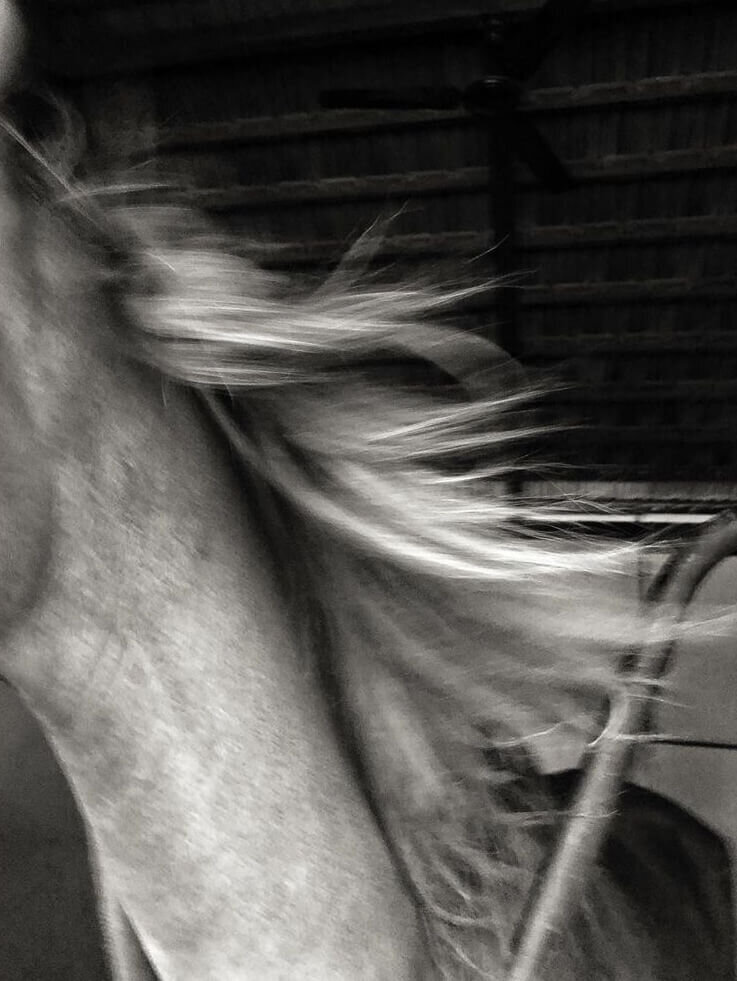unediting—zahra amiruddin
In this series, called Unediting, artists from all over the world reveal to us what really goes on behind the scenes of their finalized art.
For this post, we have a conversation with Zahra Amiruddin and talk about how she approaches her photography work. We then dive deep into three particular images shot by her, to understand how she creates her magic.
Zahra Amiruddin is an independent writer, photographer, and educator based in Bombay. After studying photography, art history, and theatre at the Aegean Centre for the Fine Arts, in Paros, Greece, she's worked and contributed to various publications such as The Conde Nast Traveller India, The National Geographic Traveller India, Time Out India, The Hindu, First Post, Elle, Scroll, and Soup amongst others. Apart from teaching photography workshops at colleges and cultural festivals, her main areas of interest include art, history, astronomy, personal narratives, and family histories. Her greatest thrill has been assisting Brandon Stanton of Humans of New York during his trip to India, and working with a team of scientists at the Lonar Crater in Maharashtra. When she's not chasing after pockets full of light, she practices conjuring the perfect patronus in her free time.
Dhruv: We're intrigued about what "style" we should categorize your beautiful photography in. What do you want someone to feel when they see your work?
Zahra: I’m not one to classify a photography “style”, into a specific genre, only because it’s constantly shifting with my work. I might be a documentary photographer on days, a portrait photographer on others, and most of the time, someone who makes images for herself- usually, with no other purpose than making them. A lot of people categorise my images into the “Fine Art,” genre, which is completely alright, but I would personally title them “Mood-based.”
Since both, image-making, and reading a photograph is such a personal experience, I want people to feel absolutely anything that they are feeling while viewing my work. It would be an added bonus if they told me : )
Dhruv: Do you preconceive the nature of the shoot before shooting or while editing? If yes, to what extent does it impact or shape the outcome?
Zahra: When it comes to a commercial set-up, I most definitely have a loose plan in mind in terms of location, and the ideal spots to photograph. Since I’m not very good with navigating through artificial lighting set-ups, I’m usually veering towards areas with a lot of available sunlight. Sharp shadows, and highlights are always welcome.
For personal shoots, I’ve started to build patterns in my mind that I revisit while photographing new scenes. For example, if I’ve photographed a single wilting rose, I know I want a melancholic photograph to go with it, and then seek-out the image. This is something that’s completely new in my photographic process and has built over time. Until a few months ago, I could only see my photographs as single images, independent from one another. But after looking at them for a long while, I noticed the similarity in textures, shadows, blank spaces, and patterns flowing into each other. Now, the editing has definitely started shaping my photography.
Dhruv: Is black and white photography a preferred medium? What feelings does it convey to you?
Zahra: I always find this question hard to answer because I don't consciously prefer it over color, but that’s just how my subconscious works. I tend to take soft photographs, that don't seem busy, and so, black-and-white-ness binds them together seamlessly. It conveys a sense of cohesiveness with reference to my photographs, which wouldn’t tell the same tale if left in color. When I do choose to use color, you will almost always find hints of blue.
We now take a look at three of Zahra's photographs in particular and ask her how she made them.
Dhruv: There’s an 'ongoing-ness' to the photos. It feels like both the moment captured and the photographer were in transit. Is that intentional?
Zahra: Thank you so much for this lovely observation. I wouldn’t say it’s intentional, because I photograph exactly what I see. So if I’m in transit, I guess, so are my photographs.
Dhruv: Tell us about the technical set-up of the shoot. What is the role of lighting/composition/etc in the final photo?
Zahra: I have a few go-tos that I personally follow in my photographic process. As clichéd as it may sound- follow the light. Play with it as much as you can. Let it shift and mould your frames and the people residing within them. Experiment with angles, and pick the one that seems most natural to you. With reference to composition, I always ensure that my lines are straight, the four edges of the frame have exactly what I want to convey, and I don’t rely on post-processing to edit/heal out anything that I don’t want. I mostly crop everything that I need to while making the photograph itself.
Dhruv: How did you go about framing this shot? Were there other different ways of composing you tried for this scene?
Zahra: This photograph was made at the Denali National Park in Alaska last year. It was such a memorable trip because I did a road-trip through the State with my parents, who patiently waited as I wandered in search of frames that resonated with me.
I made this image during a safari through the acres of the National Park, when we were allowed to step outside our canter, and watch two reindeer lazing in the distance. There were a number of reindeer antlers lying about since it was shedding season, and of course, I had to document the rare sight. I was sure I wanted to include the streak of sunlight in the background, give a sense of the landscape, and still hero the antlers. And so, I sat on the ground and decided to use a low angle shot to capture the entire scene before me. The particular composition came to me instantaneously since I wanted the antlers to appear larger in the foreground, in comparison to the massive mountains in the background.
Dhruv: How did you go about the post-processing?
Zahra: Since I photographed this on my Iphone 8, I used a phone editing app known as Snapseed for the post-processing. The first step was to convert it to black-and-white, play around with the contrast, brighten-up the falling sunlight on the antlers, and then add grain.
Dhruv: Do you approach landscape photography differently from your other work?
Zahra: You could possibly say that most of my landscape photographs show the expanse of the place through the negative space in the frame. I try to capture the sprawling sight solely by playing with angles of the frame- either placing my camera high in the sky, or down on the ground.
Dhruv: What mood were you going for in this? What did you want someone to feel as they saw this?
Zahra: I photographed this absolutely beauty while on assignment for The Hindu. I was working on a story about Equine Therapy, which is a form of therapy that uses horses to aid people with mental health illnesses. Since I was a child, I have always been fascinated with the effortless grace and beauty of a horse, and to be spending a considerable amount of time with them, was a dream come true. I was trying to convey that same sense of awe, and their ability to mesmerise me, through this photograph. For me, they are also enigmatic, and I guess that’s why I chose to photograph only her mane, as opposed to her entirely.
Dhruv: While shooting this, were you actively looking for such scenes of serendipity?
Zahra: I came across this scene rather serendipitously on my last day in San Francisco last year. I have a certain affinity towards The Golden Gate Bridge that has an ever-changing landscape, and shifts its moods according to the unpredictable weather. I spotted this little one sprinting while playing with his owner, as the rolling fog enveloped the bridge. I wasn’t there to shoot, I was there to say goodbye. And I guess, the universe was saying it back.
Dhruv: Do you wait for such scenes to come, staying fixed for a long period of time, or do you move about a lot?
Zahra: I tend to stick around in one place for a while before I set off. I only move if I think the place doesn’t lend itself to my photographic eye, or when I’m satisfied that I’ve got my shot. Then, you’ll see me wandering again.
On the Cutting Room Floor
Photos that didn't make the final cut:
You can find more of Zahra's work at:
https://thesoup.website/journal/2019/11/28/portrait-of-a-woman-and-her-camera
https://www.thehindu.com/search/?q=zahra+amiruddin&order=DESC&sort=publishdate
http://www.natgeotraveller.in/in-photos-maharashtras-extraterrestrial-lands/
She also posts regularly on her Instagram ~ @zahra.amiruddin



















